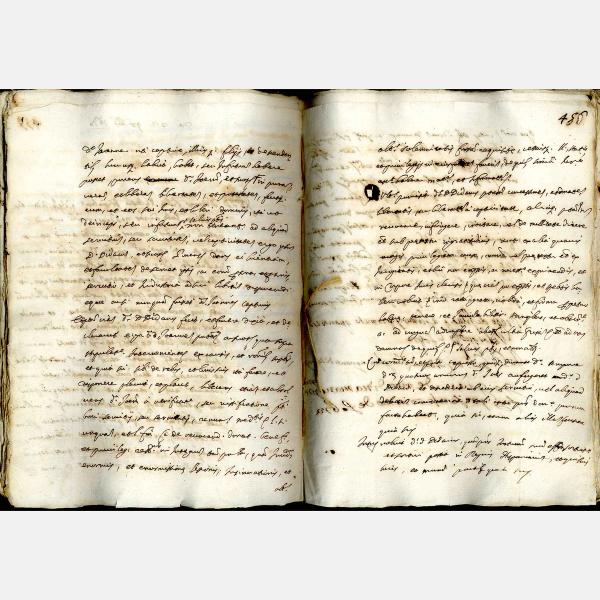Manumission document (Donatio Libertatis)
Artwork Details
- Title: Manumission document (Donatio Libertatis)
- Date: 1650
- Classification: Manuscripts and Illuminations
- Credit Line: Archivio di Stato di Roma
- Curatorial Department: European Paintings
Audio

636. Manumission Document, 1650
DAVID WHEAT: As a historian I love documents. Documents are proof, they’re textual evidence. Juan de Pareja exists in the everyday world, not only as this artistic giant.
NARRATOR: What you’re looking at here is a manumission record dating to 1650 and handwritten in Latin. David Wheat, Associate professor of History at Michigan State University.
DAVID WHEAT: A manumission record is a document that is a binding contract, stating that this person will no longer be enslaved if they meet the following conditions.
NARRATOR: This is the legal document that freed Juan de Pareja — but with a condition: first he had four more years of enslavement in Diego Velázquez’s home. It refutes the long-parroted myth that Pareja continued to work willingly for his enslaver after receiving his freedom.
DAVID WHEAT: What I think is really interesting about this record is that it doesn’t shed any light on how he came to be enslaved. It mentions the name of his father, who was also Juan de Pareja. And that his father was from the town of Antequera, in the province of Malaga. But it doesn’t ascribe any racial identity or ethnic religious heritage to his father, or to Juan de Pareja himself.
We don’t have any contemporary references to Pareja’s ethnic origins, his religious heritage, his skin tone, even things that might give us clues about how he came into the service of Velázquez.
NARRATOR: With so many unanswered questions, finding and interrogating documents like this one are just the beginning of the quest to understand the life of Juan de Pareja.
DAVID WHEAT: To me it opens up the possibility that maybe there are other documents, so other aspects of his life can eventually be reconstructed.